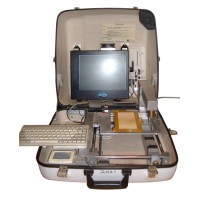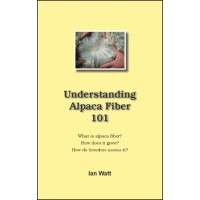Ian Watt's Alpaca Fiber Testing
My upgraded OFDA 2000 fiber testing machine is the most up-to-date fiber testing machine in the US!
Streamlined programming, modernised hardware and updated software means I can process samples faster — all I need is more samples!!
I now include the raw data report from the OFDA machine as part of the reporting.
I offer a fast processing turnaround time of same-day testing when possible (which is 90% of the time) and within three working days at other times.
I am proud to be the original provider of the OFDA2000 fiber testing system to US alpaca breeders since 2006.
Despite consistent and ill-founded criticism of the technology and reporting abilities of the system, over 1000 alpaca breeders are on our client list and it grows each testing year!
IMPORTANT:
As with everything in life today, costs are rising and not easing.
Unfortunately my services are not unaffected, though my commitment to keeping fiber testing as affordable as possible remains.
For clients who pay by cash, bank transfer or check the prices for these services remain unchanged.
For growers paying by plastic card the fee for both OFDA tests rises by 25 cents.
Please read this Important Information Concerning Credit Card Transactions page for more information if wishing to pay by credit card, and for how to pay by check or bank transfer.
LOOKING FOR THE SHEETS?
The Simple Fiber Test Information Sheet is here
The Premium Fiber Test Information Sheet is here
Be sure to check out www.alpacastats.com to see how we report things for your testing dollar!
Featured
Simple Fiber Test
IMPORTANT: The $2.25 price and minimum order number of 5 listed above incorporate increased credit ..
Premium Fiber Tests (per test)
IMPORTANT: The $6.25 price and minimum order number of 3 listed above incorporate increased credit ..
Grid Testing (per animal for three tests)
IMPORTANT: The $12.25 price listed above incorporates increased credit card processing fees. The p..
Understanding Alpaca Fiber 101
Understanding Alpaca Fiber 101 A 30 page booklet on matters fiber in easy-to-read language ..




